SHORTBOWL decanter centrifuge
Due to the special geometry of the rotating parts, the SHORTBOWL decanter centrifuge - solid bowl is best suited for separating fine solid particles with a high specific density difference to the liquid phase.
Glycerin (C₃H8O₃) also known as Glycerol, is a colorless, odorless, viscous liquid that is widely used in many industries, including the food, cosmetic, pharmaceutical, and chemical industries. It is a trihydric alcohol, which means it has three hydroxyl groups (-OH) attached to a carbon atom. Another common name for Glycerin is propane-1,2,3-triol.
Glycerin has a wide range of industrial applications, including:

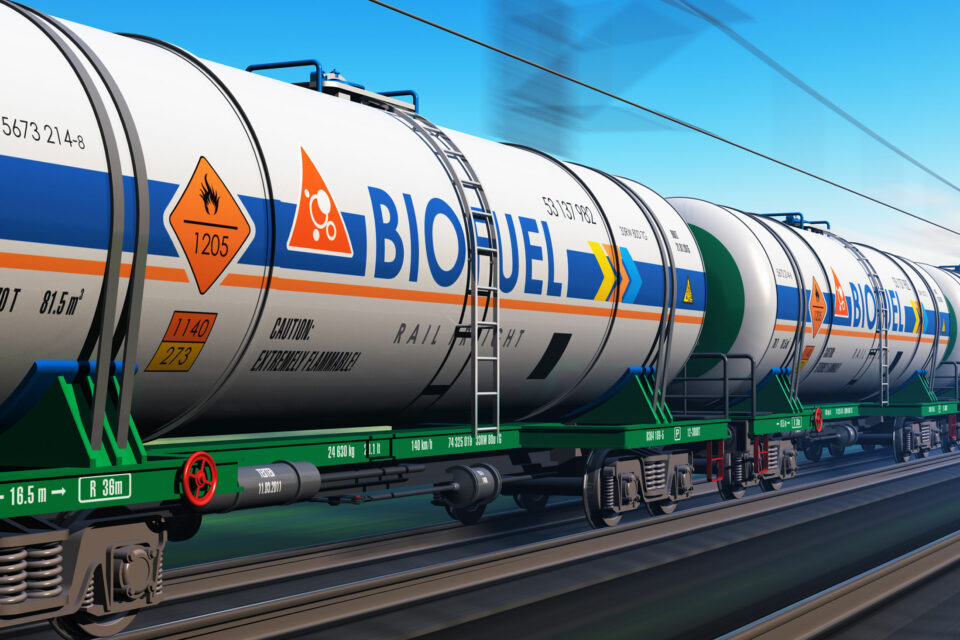
In nature, Glycerin is mainly found in fats and oils. It also plays an important role as an intermediate product in various metabolic processes in most living organisms.
In the past, Glycerin was either obtained petrochemically from propene with the intermediates ally-chloride and epichlorohydrin, or chemically as a by-product in the saponification of natural fats and oils to produce soaps.
Nowadays, Glycerin is commonly obtained as a by-product of the transesterification reaction that converts fats and oils into biodiesel. During this reaction, the fats or oils are reacted with methanol or ethanol to produce methyl or ethyl esters (biodiesel) and crude glycerin. This crude glycerin contains water, salts and impurities, which must be removed to obtain the pure Glycerin.
Since the mid-1990s, biodiesel (fatty acid methyl ester) has been produced from vegetable oils. The by-product of this process is glycerin, which after processing can be sold either concentrated (at least 80% glycerin content) or distilled (glycerin content 99.7%). The production of one metric ton of biodiesel yields slightly more than 100 kg of glycerin. The glycerin is produced in the biodiesel production process as follows: Vegetable oil triglyceride + 3 x methanol = 3 x vegetable oil methyl ester + glycerin.
In relation to the vegetable oil used, about 10% glycerol is produced. Since glycerol, unlike biodiesel, is polar, all the polar substances formed during the reaction that are naturally present in the oil or enter the oil during oil treatment collect in the glycerol. These are in particular methanol, water, soap, inorganic salts and polar organic compounds.
The soap alone in the biodiesel (approx. 8-35%, depending on process control and procedure) would make distillation of the crude glycerin impossible. For this reason, the glycerol must be prepared for distillation in several steps.
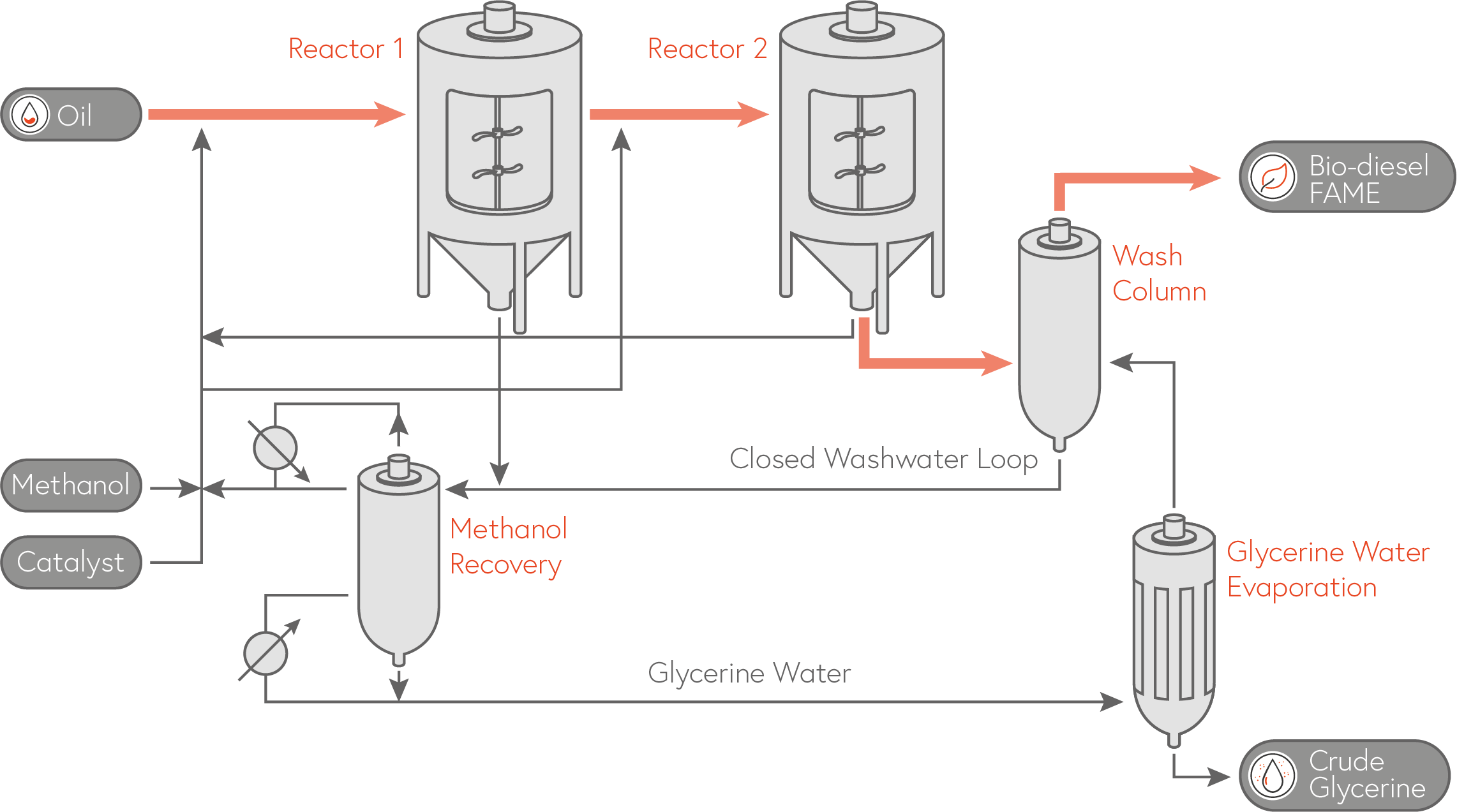
The still impure glycerol from step 6 is refined by distillation to 80-85% to so-called „pharmaceutical glycerol“. The settled salt suspension (sodium chloride or potassium chloride) is separated at high temperatures by a special SIEBTECHNIK TEMA decanter for very high temperatures. In other processes, a thin-film evaporator is also used for this purpose, but in recent years separation with a (possibly upstream) SIEBTECHNIK TEMA SHORTBOWL decanter has become established on the market.
The separated salt can later be landfilled or put to another use. The pharmaceutical-grade glycerol has a purity of >99.5% and is later used in the chemical industry, among others.
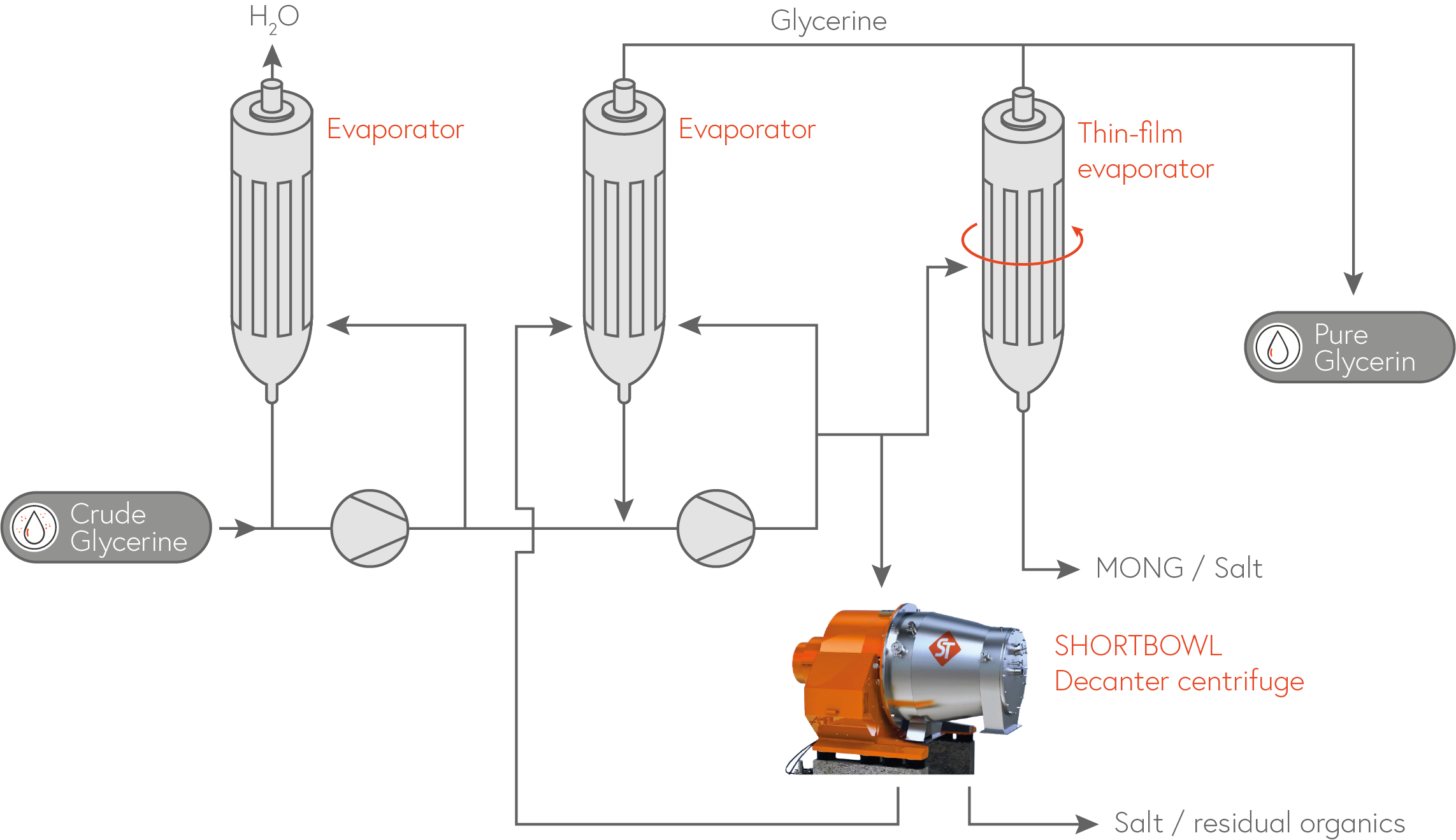
Centrifuges are key equipment in the production of pharmaceutical grade glycerin because the purity and quality of the glycerin is critical to its use in the pharmaceutical industry.
They are used to separate the glycerin from the unwanted impurities mentioned above, and to wash and dry the glycerin to achieve the quality required for use in the pharmaceutical industry.
SHORTBOWL decanters are particularly successful for solid-liquid separation in a hot stream suspension.
Advantages include the cantilevered design, which eliminates bearings and shafts in the hot product area by separating the product and drive areas. The very high suspension temperatures can only be controlled with the SHORTBOWL decanter and its cantilever system with integrated oil cooling, as confirmed by many of our customers worldwide.
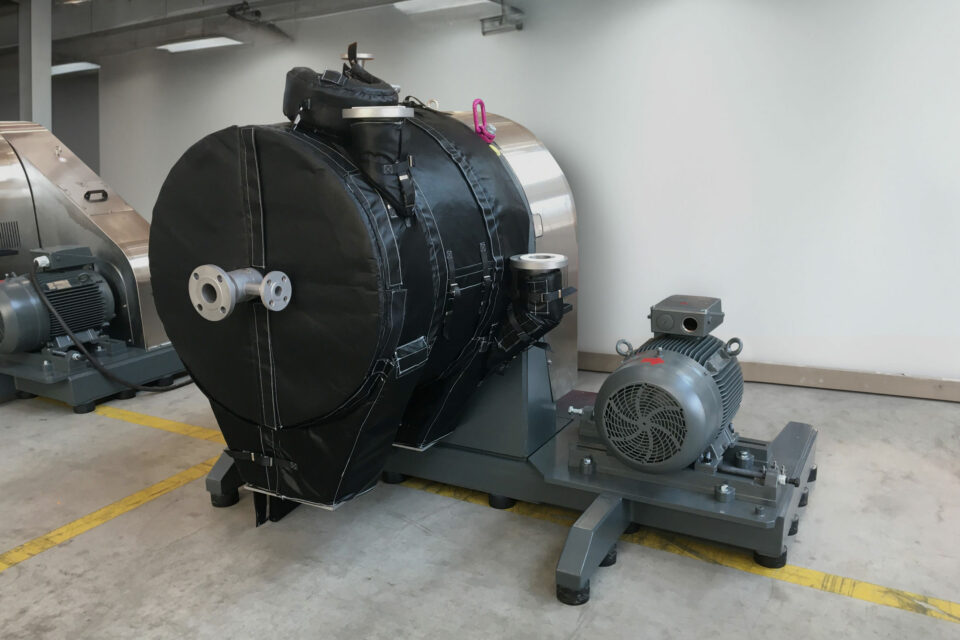

SIEBTECHNIK TEMA centrifuges are specially optimized for the respective separation task. When selecting materials, austenitic and ferritic stainless steels have proven themselves in centrifuge construction for applications subject to normal stresses.
For processes in which abrasive materials are processed, the centrifuges must be provided with effective wear protection. Starting with hard coal processing, we have been continuously developing wear protection systems since 1922.
Our centrifuges can be equipped with highly developed wear protection systems made of e.g. tungsten carbide, Stellite® or ceramic tiles, to name but a few. Rubber coatings or matrix coatings have also proven themselves in various applications.
If required, our engineers develop new and efficient solutions in coating, bonding and joining technology for our customers worldwide.
Centrifuge components must not only withstand high forces, but also process-related stresses such as corrosion, wear and high temperatures. Cost and availability of materials also play an important role. Our customers select the necessary product-contacting materials according to these very specific requirements.
Duplex and high-alloy stainless steels, Hastelloy® and titanium materials for a wide variety of processes and stresses are part of our daily business in centrifuge construction. Our quality management has developed very detailed and cost effective processes for design, manufacturing processes and component testing based on European guidelines.
Typical sheet metal and forging materials for centrifuge wetted components include
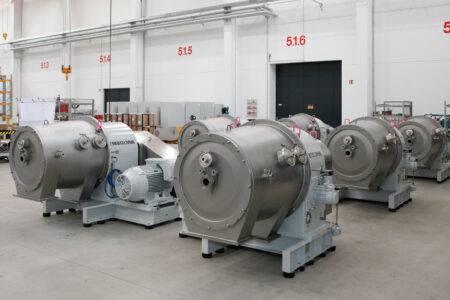
Due to the special geometry of the rotating parts, the SHORTBOWL decanter centrifuge - solid bowl is best suited for separating fine solid particles with a high specific density difference to the liquid phase.

Find the right contact for your region.
We have the right solution for every task. And if not, we’ll work with you to find one. Get in touch with us!
Our specialists will be happy to advise you individually on site or remotely, and are available to answer any questions you may have. Send us a message using our
